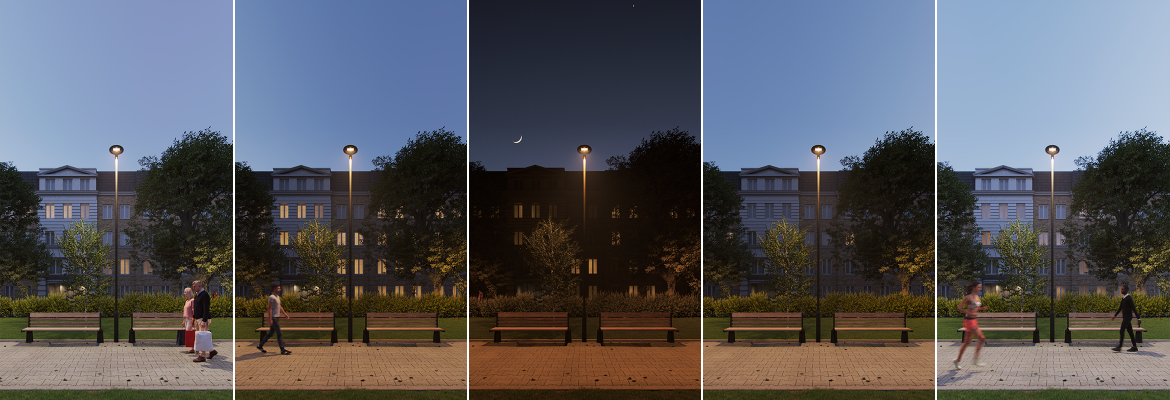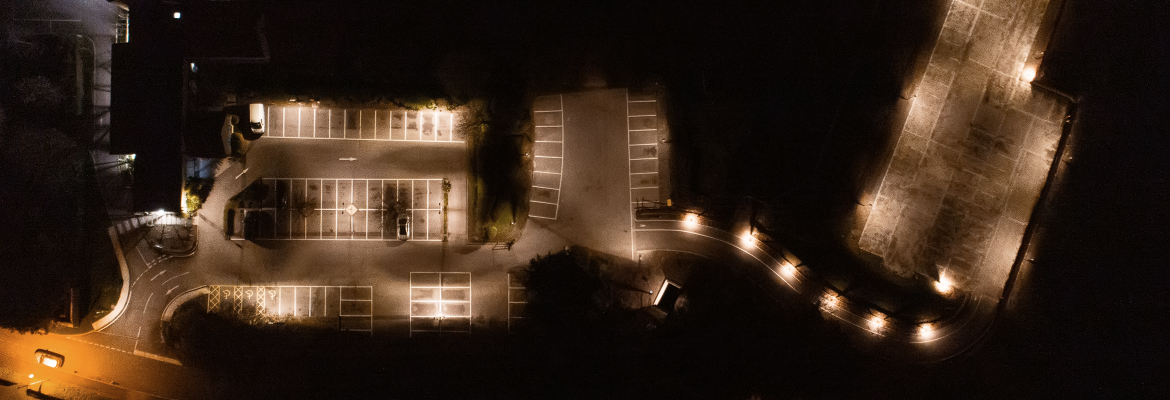How to light outdoor car parks
March 2022
March 2022
Lighting within car parks plays a number of essential roles. Not only does it aid the safety and security of those using the car park, but it also helps drivers locate their vehicle and pedestrians move comfortably around the often-tight locations.
It may seem straightforward to illuminate a car park, but a high level of planning and design is required to make it work. Here, our Applications Team offers some advice for lighting outdoor car parks.
Choose the appropriate lighting level
Determining the right lighting level can be complicated. However, by basing the decision on how busy a car park is – or how busy it has the capacity to be – this will start to build a picture of the required light levels. This can be split into light, medium or heavy traffic. To put this into context, heavy traffic would be a busy shopping centre, such as Bluewater. Furthermore, the type and location of a car park should also be considered.
The different lighting levels required in a car park are also covered under the British Standards BS 5489‑1:2020 and BS EN 12464. A summary of the requirements for exterior car parks is shown in the table below.
| ⠀ | Type of area and usage | ⠀⠀⠀⠀⠀⠀⠀⠀⠀⠀⠀⠀⠀⠀⠀⠀⠀⠀Average | ⠀⠀⠀⠀⠀⠀Uniformity (%) |
| ⠀⠀Light Traffic | e.g. parking areas of shops, terraced and apartment houses | ⠀⠀⠀⠀⠀⠀⠀⠀⠀⠀⠀⠀⠀⠀⠀⠀⠀⠀5 lux |
⠀⠀⠀⠀⠀⠀0.25 |
| ⠀⠀Medium Traffic | e.g. parking areas of department stores, office buildings, plants | ⠀⠀⠀⠀⠀⠀⠀⠀⠀⠀⠀⠀⠀⠀⠀⠀⠀⠀10 lux |
⠀⠀⠀⠀⠀⠀0.25 |
| ⠀⠀Heavy Traffic | e.g. parking areas of major shopping centres, major sports | ⠀⠀⠀⠀⠀⠀⠀⠀⠀⠀⠀⠀⠀⠀⠀⠀⠀⠀20 lux |
⠀⠀⠀⠀⠀⠀0.25 |
Maintained lighting levels for outdoor car parks (based on table 4 of BS 5489-1:2020)
Consider colour temperature
White light will always create the optimal and safest atmosphere for parking. It provides a clear image of the car park and assists CCTV while ensuring pedestrians can see and be seen. It also provides a sense of wellbeing, including the accentuation of landscaping or architectural features. For car park lighting, the light source should have a minimum colour rendering of 70Ra, with a Correlated Colour Temperature (CCT) of 3000K or warmer being preferable.
Consider lighting controls
The lighting levels required at peak times – such as the end of the working day, around 5pm – compared to quieter periods, will of course have different demands. Shopping centre car parks are not used after the shops and restaurants are shut, while 24-hour supermarkets can be used at all hours, but will still have ebbs and flows in traffic. It is therefore important to consider lowering and increasing the lighting levels to match the traffic. This will not only provide all-important energy savings, but will also help to avoid potentially obtrusive light during hours of darkness
The use of LED light sources and intelligent lighting controls, from relatively simple PIR to more complex video detection systems, can be used to trigger lighting level changes. Not only will this reduce energy consumption, it will act as a guide for pedestrians and vehicles to vacant spaces or preferable parking areas.

Daytona features Tunable White technology that can dynamically adjust the CCT of the light, transitioning from cooler to warmer white light
Our Daytona luminaire is a prime example of how controllability can have a huge impact. With an elegant design, incorporating future-proofed technology and being Smart City ready, Daytona is a perfect solution for car parks.
As DW Windsor’s first luminaire to include Tunable White technology, Daytona is a flexible and innovative solution. By adjusting the luminaire’s colour temperature and brightness throughout the night, visual comfort can be improved for pedestrians and road users. It also offers a sense of security, while minimising the impact on wildlife and biodiversity.
Think about key locations
It is important to avoid creating hazards by using landscaped areas or walkways for column locations where possible. In addition, the consideration of how traffic will use the space is imperative. Furthermore, lighting must be concentrated in areas such as entrances and exits, parking meters or signage. Car park users need to be able to carry out important tasks, such as reading the tariff signage or locating exit barriers.

At Dorothy House, Diamond+ Optics ensure light is only placed where it's needed, whilst PIR sensors are used to dim the luminaires
Minimise glare
Modern lighting, in particular LED products, should have optics, accessories and glazing that control light much more effectively than outdated technologies. Using the right amount of light, at the right time, and in the right place is not only more ecologically sound, but it also reduces energy usage.
To achieve this, lighting should be concentrated onto the main car parking area, with careful consideration given to adjacent buildings. If the car park is in a residential area, it is vital that removing the risk of light spill into back gardens or windows is considered.
The number of columns should be considered. Bracket arms and luminaires with zero-degree inclinations will aid this, as will light sources with minimal upward light. For larger car parks, using a higher-powered light source with a taller mounting height can often be the most economical way to light a large area and far less obtrusive than a ‘forest’ of columns.
Here to help
DW Windsor has been integral in the upgrading of lighting for car parks across the UK. By reconfiguring and updating the lighting, DW Windsor has improved safety and security, offering reassurance to car park users, as well as adding further benefits for the environment while reducing overheads for car park operators.
If you would like help with your next car park lighting scheme, get in touch.